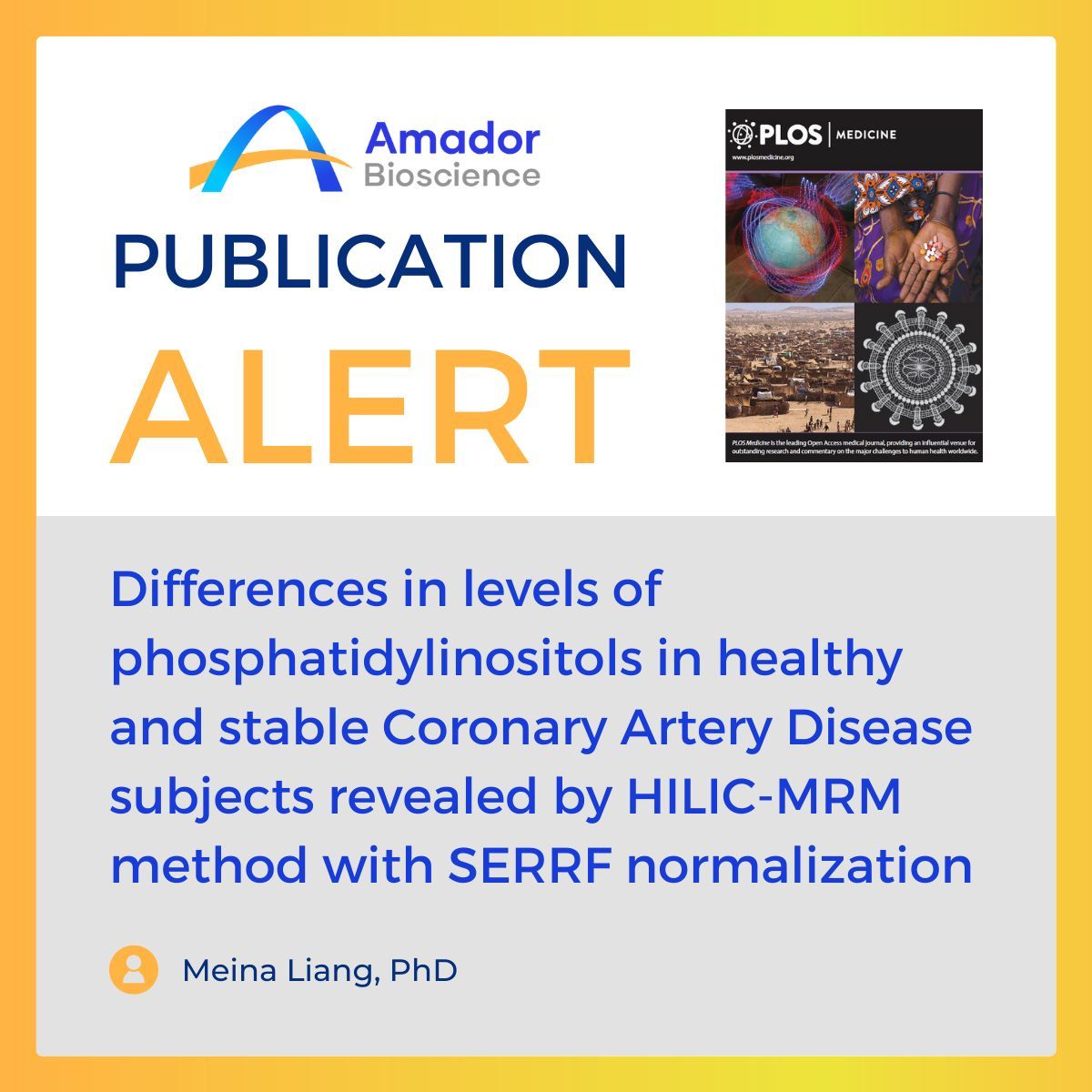Differences in levels ofphosphatidylinositols in healthy and stable Coronary Artery Disease subjects revealed by HILIC-MRM method with SERRF normalization
Today's mid-week read is a Public Library of Science (PLOS) publication from Dr. Meina Liang, our Chief Technology Officer (CTO) and President of Bioanalysis and Biomarkers.
 \
\
Today's mid-week read is a Public Library of Science (PLOS) publication from Dr. Meina Liang, our Chief Technology Officer (CTO) and President of Bioanalysis and Biomarkers.
📑Learn how she and a team of expert bioanalysts assess the viability of using a clinically-relevant biomarker to diagnose heart disease here: https://hubs.la/Q01rGPPt0
Plasma phospholipids are biomarkers for a variety of diseases. Phosphatidylinositols (PI) represent a small percentage of plasma phospholipids, however there is evidence that PI could be key biomarkers for Coronary Artery Disease (CAD) and possibly other clinical conditions. Differences reported in PI levels comparing healthy and CAD subjects has already proven the usefulness of PI profiling. Therefore, bioanalytical advances in the methods to characterize PI in human plasma may represent significant progress in disease diagnosis.
In this publication, the researchers characterized and assessed the viability of a high throughput method for the targeted multiplex quantification of PI in human plasma using hydrophilic interaction liquid chromatography (HILIC) separation coupled with multiple reaction monitoring (MRM). Application of this innovative method allowed the team to establish a definitive dynamic linear range for PI lipids. The results of this investigation, testing human plasma samples, showed that PI levels were significantly and longitudinally consistently lower in the CAD patients compared to healthy subjects.
The approaches presented within this work exemplify the importance of the development, characterization, and qualification of analytical methods for the measurement of clinically relevant lipid biomarkers.
 \
\


